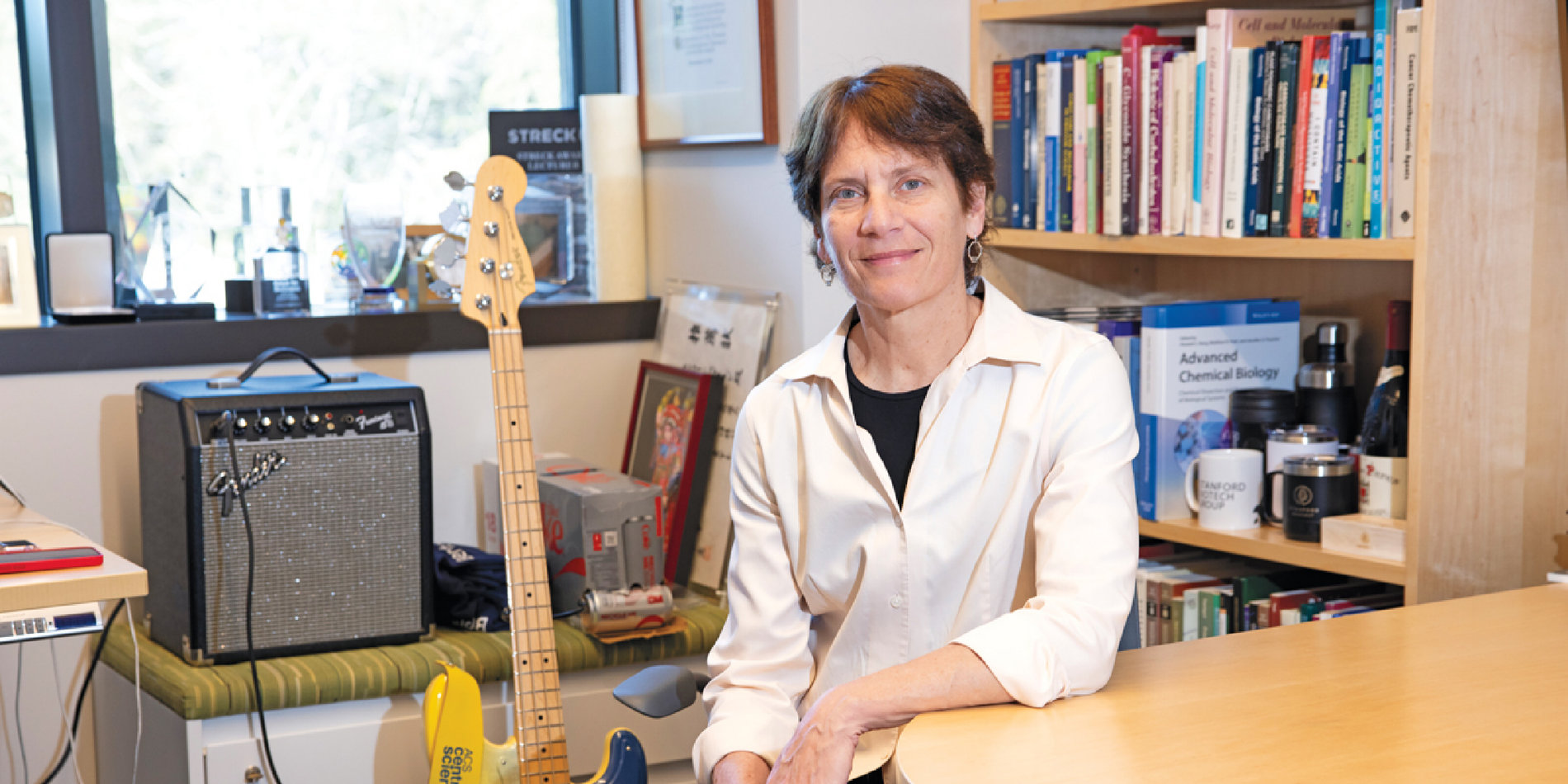Steven Banik to join Stanford ChEM-H as an assistant professor of chemistry

Steven Banik will join Stanford ChEM-H as an Institute Scholar and the Stanford Chemistry Department as an assistant professor in January 2021. Currently a postdoctoral scholar in the lab of ChEM-H Baker Family Director Carolyn Bertozzi, Banik plans to combine his training in synthetic chemistry and biology to create molecular tools to study and treat diseases. Here, he talks to us about his path to ChEM-H, his passion for molecular design and his vision for an interdisciplinary lab.
Can you share a little bit about your background and what brought you here to Stanford?
I’m from Madison, Wisconsin, and I did my undergraduate research in polymer chemistry with a Stanford alumnus, Mahesh Mahanthappa. As an undergrad, I did a summer of research with Bob Waymouth in the chemistry department at Stanford. During my graduate studies at Harvard University, I studied organic chemistry and catalysis. There, I developed new kinds of catalytic reactions and studied why those worked and tried to figure out ways to improve them or use them to make interesting molecules.
After that solid training in synthetic chemistry, I decided to transition into biological research and searched for professors who would take a risk on someone who had no biological training. Carolyn Bertozzi is one of those amazing mentors who is willing to take people from whatever background and helps transform them into what they want to be. I feel lucky that she accepted me as a postdoctoral scholar in her lab.
What made you decide to pivot your training from chemistry to biology?
For me, it was a natural choice. When I reflected on all the things that I enjoyed about research, I kept coming back to molecules: designing molecules and understanding how they precisely interact with their environments. These ideas converge in synthetic chemistry where, for instance, you might try to design and efficiently make a drug, but they are also central to biology, where you could make a molecular tool to help answer biological questions.
When I thought about this transition and opportunity for growth, the idea of manipulating biological molecules was exciting to me. I realized that I could apply my chemical training and learn a whole new skill set to study molecules in biological contexts.
What kinds of research do you hope to pursue in your independent career?
I want to figure out ways of rewiring cells or asking cells to do something differently by leveraging the proteins and enzymes they already have, without manipulating them genetically. During my postdoc, I developed a set of tools called LYTACs, which use the cell’s natural machinery to degrade dangerous proteins that sit atop or outside the cell. I’d like to develop more tools to help us study the ways cells naturally rewire themselves, which happens in diseases like cancer, and ideally develop therapeutics. This could have important applications in other realms of human health, like regenerative medicine and aging.
The makeup of my lab is going to be everyone from synthetic chemists who are looking to apply the molecules they make in a biological context, to engineers who want to design a protein, to cell biologists who make tools to better understand fundamental biological processes.
What excites you the most about being a professor?
The first thing that excited me is the freedom that comes with academia. I am excited—and also terrified—to ask questions that people have never asked before. I get do scientifically different things and bring my own perspective to it.
The second thing that has motivated my decision to be a professor is the opportunity to mentor younger scientists. I look forward to being able to help trainees develop their ability to think creatively, communicate clearly and solve problems effectively, skills that will serve them no matter what they do after grad school.
What attracted you to Stanford and to ChEM-H?
Being familiar with Stanford already, I know how amazing all the trainees and my future colleagues will be. Knowing that made the decision easy.
Also, ChEM-H to me embodies what academic research is all about, which is a balance between exploring the unknown and having a positive impact on the world around you. ChEM-H is a home that welcomes you to bring your expertise without limiting you to that expertise. Here, I can be a chemist or a biologist, I can collaborate with physicians or engineers. There is a freedom here that makes you feel like you can be anything.
Bertozzi is the Anne T. and Robert M. Bass Professor in the School of Humanities and Sciences, and is also a member of Stanford Bio-X, the Wu Tsai Neurosciences Institute, the Stanford Cancer Institute and the Maternal & Child Health Research Institute (MCHRI), as well as an investigator at the Howard Hughes Medical Institute. Bob Waymouth is the Robert Eckles Swain Professor in Chemistry in the School of Humanities and Sciences.



